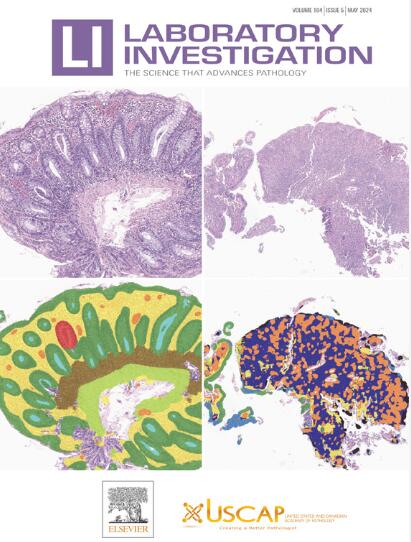Histopathological Insights into Metastatic Breast Cancer Gained From Rapid Autopsies
IF 4.2
2区 医学
Q1 MEDICINE, RESEARCH & EXPERIMENTAL
引用次数: 0
Abstract
The biology of metastatic breast cancer is poorly understood, and its understanding is hampered by limited access to metastatic tissue. Post-mortem tissue donation programs may represent a step forward to circumvent this problem, allowing access to large volumes of samples that would often be inaccessible otherwise. In this context, we have set up the UZ/KU Leuven Program for post-mortem Tissue Donation to Enhance Research (UPTIDER, NCT04531696). In this study, we performed detailed histopathological examination of 662 unique metastases collected during autopsy from the first 20 patients in our UPTIDER program. Tissue procurement was guided by a patient-specific tissue donation plan based on available clinical and imaging data. Central pathology review included revision of the primary tumor and biomarker assessment (estrogen receptor [ER], progesterone receptor [PR], human epidermal growth factor receptor 2, and KI67). Linear mixed quantile regression was used to assess relevant associations. Metastases in bones, liver, pleura, and nonaxillary lymph nodes were present in up to 17 patients. Our major findings include (1) an important clinical underestimation of disease burden in patients with invasive lobular carcinoma; (2) a relatively modest disease burden associated with leptomeningeal metastases; (3) a higher than anticipated loss of predictive biomarkers in metastases from primary ER- positive and/or PR positive tumors (up to 84% and 100% of the patients having at least 1 ER-negative or PR-negative lesion, respectively); (4) a high variability in KI67% between metastases with frequent zonation pattern; and (5) a high frequency of metastases with human epidermal growth factor receptor 2–low or –ultralow status. Despite the challenging setup of UPTIDER, we demonstrated here that the data and observations that emerge from this program have high potential for clinical translatability.
从快速尸检中获得转移性乳腺癌的组织病理学见解。
对转移性乳腺癌的生物学了解甚少,而且由于转移组织的接触有限,对转移性乳腺癌的了解也受到阻碍。死后组织捐赠项目可能是解决这一问题的一个进步,它使人们能够获得大量的样本,否则这些样本通常是无法获得的。在此背景下,我们建立了鲁汶大学/鲁汶大学尸体组织捐赠计划,以加强研究(uptid, NCT04531696)。在这项研究中,我们对在UPTIDER项目的前20名患者的尸检中收集的662例独特转移瘤进行了详细的组织病理学检查。组织采购由基于现有临床和影像学数据的患者特异性组织捐赠计划指导。中心病理检查包括原发肿瘤的修订和生物标志物评估(ER、PR、HER2和KI67)。采用线性混合分位数回归评估相关关联。17例患者出现骨、肝、胸膜和非腋窝淋巴结转移。我们的主要发现包括:a)侵袭性小叶癌患者疾病负担的重要临床低估;B)与脑膜轻脑膜转移相关的相对适度的疾病负担;c)原发性ER+和/或PR+肿瘤转移灶中预测性生物标志物的损失高于预期(分别高达84%和100%的患者至少有一个ER阴性或PR阴性病变),d) KI67%的高变异性,具有频繁的分区模式,e)转移灶的her2低或-超低状态的频率很高。尽管UPTIDER的设置具有挑战性,但我们在这里证明,从该程序中出现的数据和观察结果具有很高的临床可翻译性潜力。
本文章由计算机程序翻译,如有差异,请以英文原文为准。
求助全文
约1分钟内获得全文
求助全文
来源期刊

Laboratory Investigation
医学-病理学
CiteScore
8.30
自引率
0.00%
发文量
125
审稿时长
2 months
期刊介绍:
Laboratory Investigation is an international journal owned by the United States and Canadian Academy of Pathology. Laboratory Investigation offers prompt publication of high-quality original research in all biomedical disciplines relating to the understanding of human disease and the application of new methods to the diagnosis of disease. Both human and experimental studies are welcome.
 求助内容:
求助内容: 应助结果提醒方式:
应助结果提醒方式:


